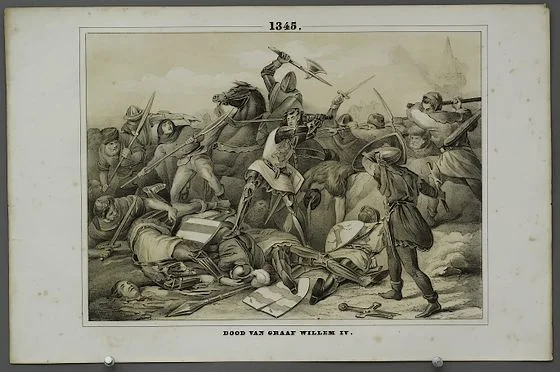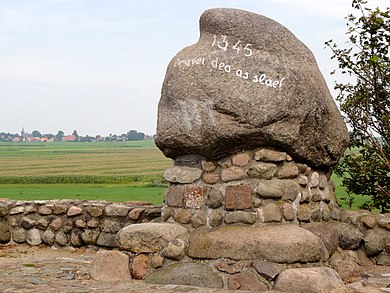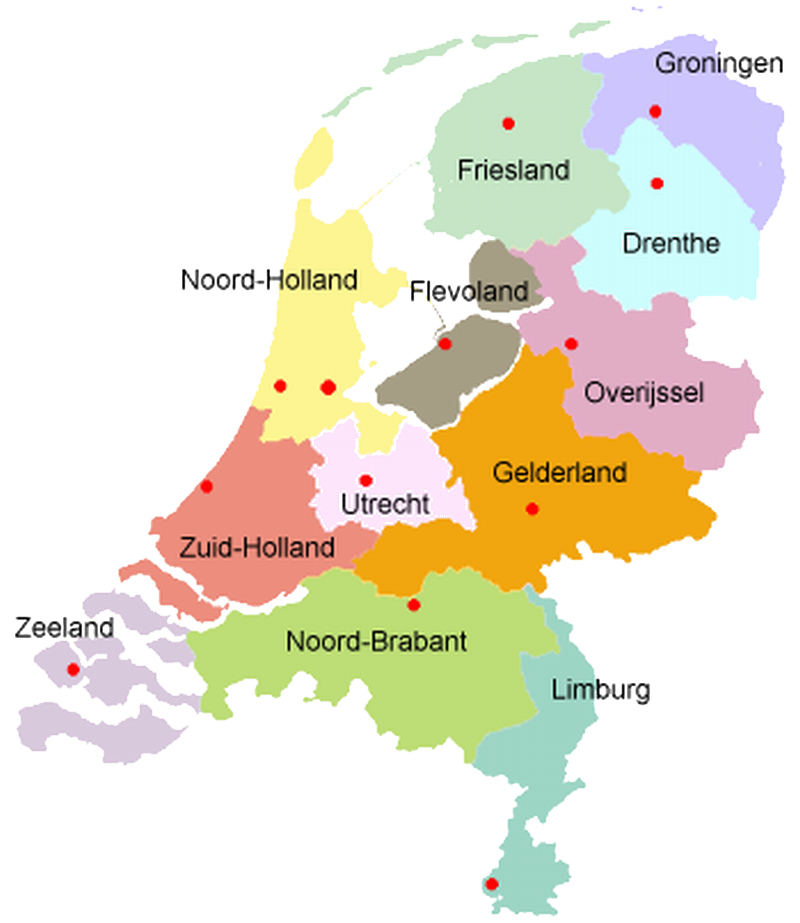
The Battle of Warns was a significant military confrontation fought in the year 1288 between the Frisians and a coalition of Dutch and Stedinger troops. The Frisians were a coastal people of what is present-day Netherlands and Germany, who fought to preserve their autonomy and defend their territories. The Dutch and Stedinger alliance sought to conquer Frisia and subjugate its people.
The battle turned out to be a decisive victory for the Dutch and Stedinger forces as they were able to breach the Frisian defenses and advance into their territory. The Frisians put up a valiant effort but were eventually overwhelmed by their opponents’ superior numbers and weaponry.
The aftermath of the Battle of Warns saw a significant shift in power and influence in the region. The Frisians lost their autonomy and were forced to submit to the authority of the Dutch and their allies. The battle also left a lasting legacy and remains a significant event in Dutch and Frisian history.
The “Slag bij Warns,” also known as the Battle of Warns, was a historical event that took place on November 26, 1345, near the village of Warns in the present-day Netherlands. This battle is a significant episode in the history of the Frisian people and their struggle for independence against feudal powers.
During the Middle Ages, the region of Frisia (located in what is now parts of the Netherlands and Germany) consisted of a group of independent, maritime-oriented communities. These Frisian towns and villages often engaged in trade and had a strong maritime culture, which contributed to their desire to maintain their independence and autonomy.

In the 14th century, tensions arose between the Frisians and the counts of Holland, who sought to exert their influence over the Frisian territories. Count William IV of Holland aimed to expand his authority and control over Frisia, leading to a series of conflicts between the Frisian communities and the counts.
The Battle of Warns marked a significant point in this conflict. The Frisians, led by the local leader Wijerd Jelckama, gathered near the village of Warns to resist the advances of Count William IV’s forces. The Frisian force was largely composed of militia, farmers, and fishermen, who were motivated by their desire to defend their way of life and preserve their independence.
Despite being heavily outnumbered and lacking formal military training, the Frisians managed to achieve a surprising victory over the superior forces of Count William IV. The battle is often remembered for the use of a tactical ruse by the Frisians. According to legend, the Frisians tied bunches of straw to their clothing, creating the appearance of a larger force in the misty conditions of the battlefield. This visual deception reportedly caused confusion among the enemy forces and contributed to their defeat.
The Battle of Warns was not a decisive victory that ended the conflict between the Frisians and the counts of Holland, but it did demonstrate the resilience and determination of the Frisian people to resist external domination. The battle has since become a symbol of Frisian resistance and independence.
Over time, the historical significance of the Battle of Warns has grown, and it is often cited as a source of pride for the Frisian people. The battle is commemorated in various ways, including through local traditions, monuments, and cultural events.
In summary, the Slag bij Warns, or Battle of Warns, was a pivotal event in the struggle for independence by the Frisian people against the encroachment of feudal powers. Despite their limited resources and military experience, the Frisians achieved a notable victory, and the battle remains an important part of Frisian history and identity.
Het roode klif

The Roode Klif is a boulder clay wall southeast of Stavoren near Scharl in the Dutch province of Friesland.
The basis of the Roode Klif was formed in the Pleistocene when the advancing glacial ice deposited material from Scandinavia in this Frisian area. In later times, the wave erosion of the Zuiderzee created steep walls, the cliffs. In addition to the Roode Klif, the Mirnser Klif and the Oudemirdumer Klif in Gaasterland were also formed in this way. The original boulder clay wall of the Roode Klif was excavated at the end of the 19th century.[1] What remains is a sloping slope of approximately 10 meters in height. On top of the Roode Klif is a monument made in 1951 in memory of the battle of Warns in 1345. On the stone is the text leaver dea as slaef, rather dead than slave.




Lorem ipsum dolor sit amet, consectetur adipiscing elit. Ut elit tellus, luctus nec ullamcorper mattis, pulvinar dapibus leo.


